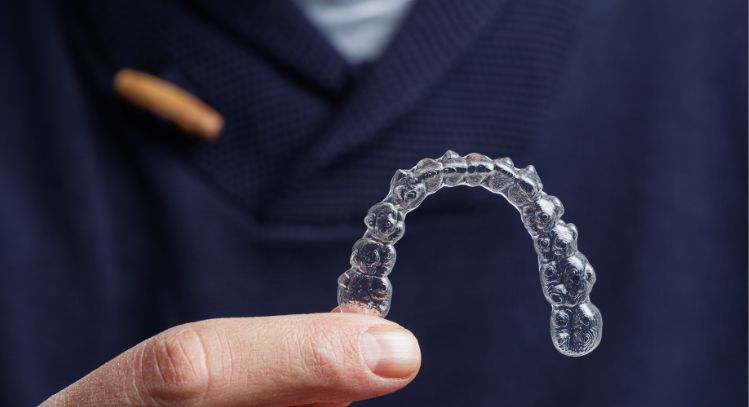
Orthodontic treatment is the process of straightening and aligning teeth to improve the appearance and function of a person's smile. There are two main types of orthodontic treatment: clear aligners and metal braces.
Both options have their own set of advantages and disadvantages, making it important for individuals to understand the differences between the two before making a decision on which treatment is right for them.

Traditional Braces
Traditional braces are the most common type of teeth straightening treatment. They consist of metal brackets and wires that are bonded to the teeth. The brackets and wires work together to apply pressure to the teeth, gradually moving them into the desired position.
The treatment time for traditional braces can vary, but it typically takes about one to three years to achieve the desired results.
Advantages of Traditional Braces
- Can treat a wide range of orthodontic issues, including severe misalignment and bite problems.
- The brackets and wires are durable and long-lasting.
- The treatment is relatively affordable.
Disadvantages of Traditional Braces
- They are visible, which can be a concern for some people.
- They can cause discomfort and irritation to the gums and cheeks.
- They require regular adjustments and visits to the orthodontist.
- Braces are not suitable for people with certain medical conditions.
Clear Aligners
Clear aligners are a newer type of teeth straightening treatment that uses clear, plastic trays that are custom-made to fit over the teeth. The trays apply gentle pressure to the teeth, gradually moving them into the desired position.
The treatment time for clear aligners can vary, but it typically takes about 6 to 18 months to achieve the desired results.
Advantages of Clear Aligners
- They are virtually invisible, making them a popular choice for adults and older teens who don't want to be seen with traditional metal braces.
- They are removable, making it easy to clean your teeth and eat whatever you want.
- They typically cause less discomfort and irritation than traditional braces.
- Clear aligners are suitable for people with certain medical conditions.
Disadvantages of Clear Aligners
- They are not as effective at treating severe orthodontic issues as traditional braces.
- They are more expensive than traditional braces.
- They require strict adherence to the treatment plan.
- Clear aligners can be lost or damaged if not handled properly.
Cost
Clear aligners and traditional metal braces are both popular options for orthodontic treatment. Clear aligners, such as Invisalign, typically cost more than traditional metal braces. Invisible braces can range in price from $5000 to $8000 on average depending on the complexity of the case and the length of the treatment.
On the other hand, traditional metal braces tend to be more affordable, with the average cost being between $5000 to $7000. It is important to note that many orthodontic clinics offer flexible financing options to help make the cost of treatment more manageable.
Which is Right for You?
The decision of whether to choose traditional braces or invisible aligners will depend on your individual needs and preferences. If you have severe orthodontic issues or a complex bite problem, traditional braces may be the best option for you.
The following table presents a striking difference between clear aligners and traditional metal braces;
| Feature | Clear Aligners | Traditional Braces |
|---|---|---|
| Visibility | Clear/Invisible | Noticeable/Metal |
| Comfort | More comfortable | Can cause discomfort |
| Treatment time | Typically shorter | Typically longer |
| Cost | Less Expensive | More expensive |
| Ability to remove for eating | Can be removed for eating | Must be worn at all times |
| Maintenance | Requires frequent adjustments | Fewer adjustments needed |
| Overall effectiveness | Can be effective for mild-moderate cases | More effective for severe cases |
If you are looking for a more discreet treatment option and are willing to pay more for it, clear aligners may be the way to go.
It's important to consult with a qualified orthodontist to determine which treatment option is best for you. They will be able to evaluate your teeth and bite, and provide you with personalized recommendations based on your unique situation.
In conclusion, both traditional braces and invisible aligners can be effective in straightening teeth and improving the appearance of your smile. It is important to carefully consider the advantages and disadvantages of each treatment option and consult with an orthodontist to make an informed decision on which one is right for you.
FAQs
Clear aligners are an orthodontic treatment that uses a series of custom-made, clear plastic trays to straighten teeth gradually. They are a more discreet alternative to traditional metal braces, as they are virtually invisible when worn.
Many patients find invisible aligners more comfortable than traditional metal braces, as they do not have metal brackets or wires that can irritate the mouth. Clear aligners are also removable, which allows for easy cleaning and eating.
Clear aligners are suitable for a wide range of orthodontic cases, including mild to moderate crowding, spacing, and bite issues. However, they may not be the best option for more severe cases or patients with certain types of bite problems.
The cost of clear aligners and traditional metal braces can vary depending on the individual case and the geographic location. In general, SmilePath clear aligners tend to be less expensive than metal braces because SmilePath does not require orthodontist visits every month. However, they may be covered by some dental insurance plans. It's best to check with your dentist or orthodontist to get a more accurate cost estimate.


 Australia
Australia New Zealand
New Zealand Malaysia
Malaysia English
English Portuguese
Portuguese English
English English
English English
English English
English English
English Canada
Canada